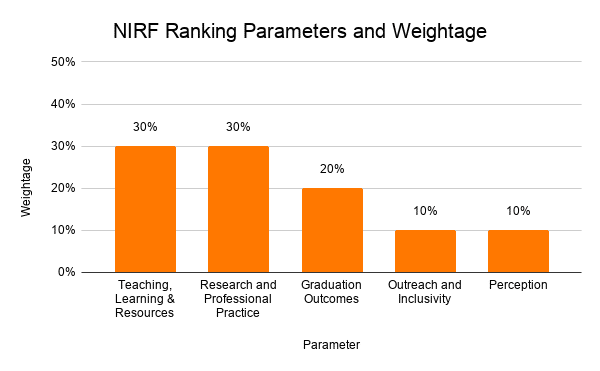It’s very common for the Indian GenZ to have second thoughts while choosing their college, university, course, and their job options.
In addition, with fresh admissions just around the horizon, the Indian Government has just issued a comprehensive list of over 6000 institutions across the country, ranked according to certain criteria issued by MHRD. This is popularly known as the National Institutional Ranking Framework or simply NIRF.
But firstly, what exactly is NIRF, and why did the Government rank colleges and universities? Read more to find this out.
What Is NIRF, And Why Has The Government Decided To Rank Universities?
The National Institute Ranking Framework (NIRF) is the government’s first attempt to rate higher education institutions (HEIs) in the country.
All educational institutions are evaluated on five categories in order to be ranked:
- teaching, learning and resources,
- research and professional practices,
- graduation results,
- outreach and inclusion,
- perception
The NIRF recognizes the finest schools in 11 categories: overall national rating, universities, engineering, college, medical, management, pharmacy, law, architecture, dentistry, and research.

During the 2015 Winter Session of Parliament, the then Education Minister, Smriti Irani condemned their low performance in worldwide league tables on subjective ranking methods.
“This is largely due to the criteria employed by these organizations for rating, which rely heavily on the perspective of a small number of people,” she stated in Parliament.
To counteract this, India chose to follow China’s approach. When China faced the same situation roughly two decades ago, they replied with their own university rating system, The Shanghai Rankings.
India had introduced NIRF back in 2015 with the same aim, but India’s NIRF was only centric to National Institutions whereas the Shanghai Rankings were open to International institutions.
But why is not every institution a part of the NIRF rankings?
Also Read: Watch: 10 Websites/Apps Every College Student Should Know For Making Their Study Life Easy
Why Can’t All Institutions Make Into NIRF?
Many people claim that NIRF is a hilarious ranking scheme since most of the old and prestigious institutions can’t make it to the top 10.
Miranda House, IIT Madras, and IISc Bangalore are currently leading the lists, but some critics say that many other colleges deserve much higher positions. Also, the colleges which are renowned in a particular city or a state, cannot make it into All India Rankings.
The NIRF ranking methodology considers a variety of factors, including education quality, research production, graduation outcome, median packages given during placements, campus amenities, diversity, one of which is outreach. So, basically, if a college is popular only because of newspaper stories and ads, it receives a better ranking.

In some cases, the newer private institutions that have been in the headlines for the outstanding work their students and staff have been doing in recent years did not do well or did not appear at all on the list.
So, in some cases, a private institution may be ranked higher than a government college, and this is accurate based on those factors.
“Reputable ranking systems such as NIRF take into consideration a variety of variables, including research, publications, and numbers of Ph.D. graduates, which have a long gestation period,” stated Dr. Jitin Chadha, Director of Indian School of Business and Finance (ISBF).
“Because higher education just opened up to private industry approximately 30-odd years ago, most private institutions are relatively young, and it is not unexpected that the newer ones aren’t in the top 10,” he added.
Do you think NIRF rankings are reliable and true? If not, what factors are responsible for the same? Do let us know in the comment section below.
Image Credits: Google Images
Sources: Edexlive; Indian Express; The Quint
Find the blogger: @chiinniiiii
This post is tagged under: NIRF; NIRF 2021; NIRF 2021 Rankings; NIRF rankings; National Institutional Ranking Framework; Government of India; GoI; Indian Government; Indian School of Business and Finance (ISBF); ISBF; Miranda House; IIT Madras; IISc Bangalore; The Shanghai Rankings; Indian GenZ; higher education institutions (HEIs); HEI; HEIs; All India Rankings































